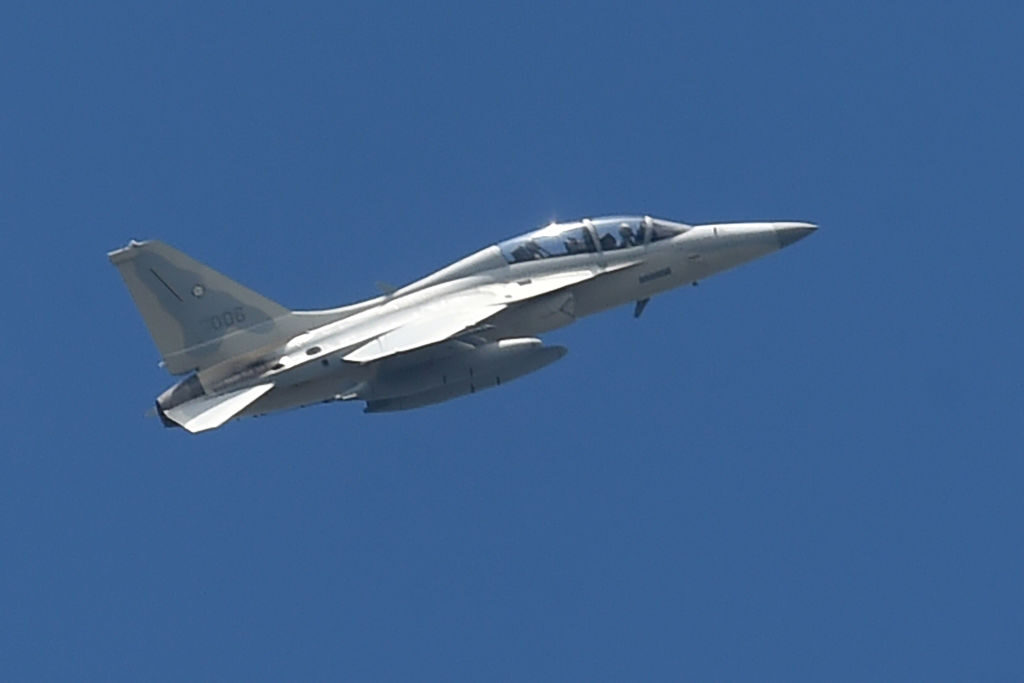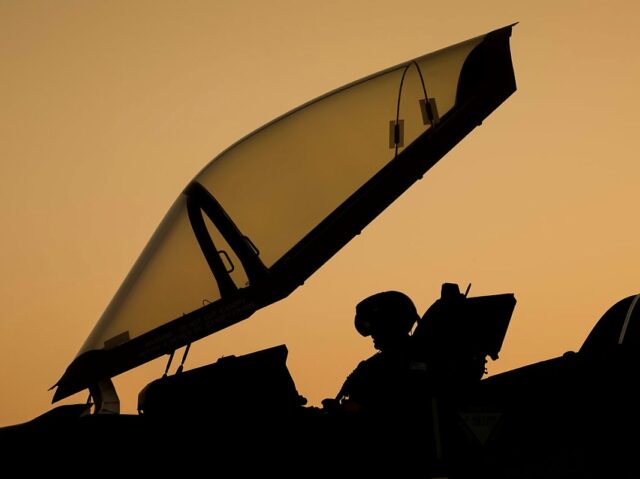U.S. and Philippine pilots launched a joint training exercise called Cope Thunder on Monday, flying together for the first time in over 30 years as a Cold War-era bilateral fighter training program was renewed in the face of Chinese aggression.
Cope Thunder was staged out of Clark Air Base on the island of Luzon from 1976 to 1990. After the eruption of Mount Pinatubo damaged the base and the U.S. withdrew in 1992, the exercise was relocated to Eielson Air Force Base in Alaska and renamed “Red Flag Alaska.”
The renewed Cope Thunder program involves a dozen F-16 fighters from the 35th Fighter Wing at Misawa Air Base in Japan, and will once again be hosted at Clark, which is now a Philippine base. At its peak in the 1970s, up to 90 warplanes were involved in the joint training program.
“Various mobility aircraft will assist with transport and logistics in support of the exercise but are not scheduled to participate in the exercise itself. The fighters will participate in various joint operations to exercise combined fighter operations; practice interoperability with tactical units; and bolster the combat capability of participating nations,” a spokesperson for Pacific Air Forces told Air & Space Forces Magazine on Monday.
“It demonstrates that the U.S. remains the preferred security partner in the Indo-Pacific. China wishes that wasn’t the case,” retired Air Force Lt. Gen. Dan Leaf, a Cope Thunder veteran and former deputy commander of what is now called the Indo-Pacific Command, told Stars and Stripes on Monday.

File/This photo taken on June 24, 2017 shows a Philippine Air Force FA-50 fighter aircraft flying overhead while targeting militant Islamist positions in Marawi on the southern island of Mindanao. (TED ALJIBE/AFP via Getty Images)
The return of Cope Thunder is the latest in a series of steps Philippine President Ferdinand Marcos, Jr., has taken to renew his country’s security alliance with the United States, reversing the more China-aligned course taken by his predecessor, Rodrigo Duterte.
In April, the Marcos administration revealed four military bases that have been opened to more use by American troops, including the naval base in Cagayan province, which is about 250 miles from Taiwan.
Also in April, the U.S. and Philippines held the largest iteration to date of the Balikatan annual military exercise, involving some 17,600 sailors, Marines, ground forces, and airmen.
Gen. Andres Centino, chief of staff for the Philippine armed forces, said the exercise was crucial for “the enhancement of our capabilities for maritime security” and learning to employ “newly-acquired equipment and weapon systems under our modernization program.”
On Saturday, the U.S. State Department denounced China’s “continued infringement upon freedom of navigation in the South China Sea,” particularly China’s well-documented harassment of Philippine naval forces and fishing boats.
“We call upon Beijing to desist from its provocative and unsafe conduct. The United States continues to track and monitor these interactions closely,” the State Department said, pointing to last week’s near-collision between a Chinese coast guard ship and a much smaller Philippine patrol craft – an act of Chinese aggression clearly witnessed by international reporters traveling aboard the Philippine ships.
“What we’ve seen recently is a series of continuing provocative acts on the part of China testing and probing into the Philippines’ waters, in areas of deep concern to the Philippines,” a senior administration official said on Sunday before the Biden-Marcos meeting, as quoted by Air and Space Forces.

File/A member of the Korea Aerospace Industries (KAI) ground crew (R) gives instructions to pilots as he inspects a newly arrived FA-50 multirole light fighter aircraft delivered to the Philippine Air Force shortly after landing at the Clark Air Base in Angeles City, Pampanga province, north of Manila on November 28, 2015. (TED ALJIBE/AFP via Getty Images)
This official said Manila is “looking for reassurance and a strong desire to maintain peace and stability in this complex period.”
Marcos met with President Joe Biden at the White House on Monday, issuing a joint statement that praised the “historic momentum in U.S.-Philippine relations” and described the two nations as “the closest of allies.”
Marcos said from the White House that it was “only natural” for his country to “look to its sole treaty partner in the world,” the United States, for a security partnership “in the face of those rising tensions that we see now around the South China Sea and Asia-Pacific and Indo-Pacific regions.”
“The United States remains ironclad in our commitment to the defense of the Philippines, including the South China Sea,” Biden reportedly told Marcos during their meeting.
“I think the advancement of this alliance and this bilateral relationship has really been stunning,” National Security Council spokesman John Kirby boasted to the press on Monday.
The rapprochement between Manila and Washington is not without its critics, beginning with Filipinos who protested outside the U.S. Embassy in Manila on Monday because they opposed the increased use of bases in the Philippines by American troops.
Much of the Filipino public is angered by China’s aggressive behavior, especially since China grew more obnoxious as Duterte became more accommodating, but left-wing parties in the Philippines want to preserve a balanced relationship with both Washington and Beijing.
Marcos himself said on Monday that China has agreed to discuss fishing rights in the South China Sea, and he wants a “direct communication line” with Beijing to ease tensions.
Radio Free Asia (RFA) on Tuesday quoted left-wing leaders in the Philippines who advised against “Philippine subservience to either imperialist state,” meaning the U.S. and China, and denounced the strengthened security agreement presented by Marcos and Biden as an effort to “tighten the geopolitical and economic grasp of the U.S. on the Philippines.”

COMMENTS
Please let us know if you're having issues with commenting.